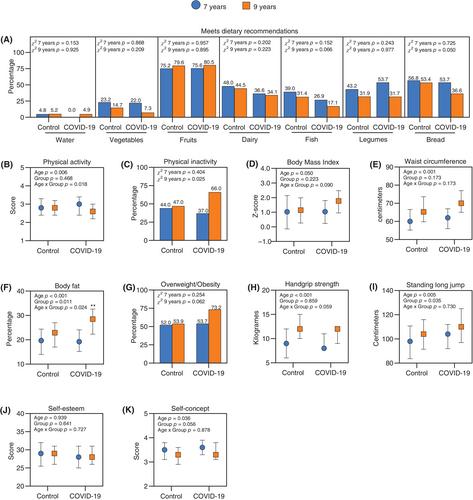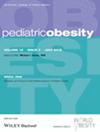Effects of school closure on lifestyle behaviours and health outcomes in children during the COVID-19 pandemic in Chile: A time-matched analysis
Abstract
Background
The COVID-19 pandemic led to school closures, potentially impairing children's behaviours and health. We aimed to explore the effects of school closure on lifestyle behaviours (dietary habits, physical activity) and health outcomes (adiposity, fitness, self-esteem, self-concept) in children.
Methods
We measured 247 children before school closure (October–November 2019) and after school reopening (October–November 2021) (COVID-19 group). To distinguish the changes due to school closure from changes due to growth, we included 655 age-matched children with cross-sectional measurements in October–November 2019 (control group). The response of this group (i.e., differences between children with 2 years of difference) was considered the expected response to growth. Two-way ANOVA was used to test age-by-group interactions, indicating an effect of school closure.
Results
In 7-to-9-year-old children, the COVID-19 group had larger-than-expected decreases in physical activity (by 0.4 points), resulting in higher physical inactivity prevalence (by 19 percent points) at 9 years. This was accompanied by larger-than-expected increases in fat percentage (by 6.1 percent point). In 8-to-10-year-old children, the COVID-19 group had higher physical inactivity prevalence at 10 years (by 20 percent points). This was accompanied by larger-than-expected increases in fat percentage (by 8.3 percent points), z-score BMI (by 0.90 units), and waist circumference (by 6.1 cm). In 9-to-11-year-old children, the COVID-19 group had larger-than-expected decreases in physical activity (by 0.3 points) and increases in self-concept (by 0.2 points). The response in dietary habits, fitness, or self-esteem was not different between groups.
Conclusion
Overall, school closure negatively impacted physical activity and adiposity, particularly in the youngest children.


 求助内容:
求助内容: 应助结果提醒方式:
应助结果提醒方式:


